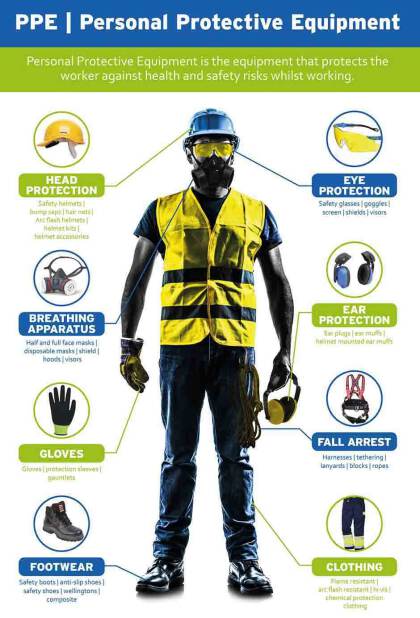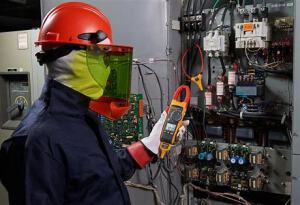5. Personal Protective Equipment (PPE):
Personal protective equipment (PPE) refers to anything workers wear to help protect them from workplace hazards.
The use of PPE as the main method to control exposures should be limited to situations where elimination, substitution, engineering, or administrative controls are not practicable, or when:
Additional protection is required because other control methods are not sufficient to reduce the hazard
The hazard is a result of a temporary or emergency condition
PPE limits exposure to the harmful effects of a hazard but only if the PPE is worn and used correctly. Examples of PPE include:
Respiratory protection
Skin protection (e.g., coveralls, aprons, full body suits)
Gloves
Eye protection (e.g., face shield, goggles)
Foot protection
Hearing protective devices (e.g., ear plugs, ear muffs)


Example :
Working at heights: Use a fall arrest system with a full-body harness and energy-absorbing lanyard.
Respiratory: Wear a respirator to protect yourself from hazardous gases, vapours and particulates.
Skin exposure: Wear protective clothing and gloves.
Hearing protection: Wear ear muffs or earplugs to block out sound.